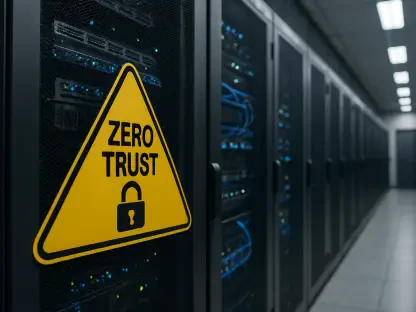In the digital age, cybersecurity risks have evolved beyond technical challenges to encompass the unpredictable realm of human behavior within businesses. An intriguing statistic reveals that merely 10 percent of employees are accountable for a significant 73 percent of risky behaviors occurring within organizations. This fact compels a reevaluation of traditional assumptions surrounding cyber risk. Remarkably, contrary to longstanding beliefs, the data suggests that remote and part-time workers present a lower security risk compared to full-time, in-office staff. It is worth noting that 78 percent of employees consciously engage in practices that reduce cyber risks, underscoring the importance of understanding human risk as a multifaceted issue. The findings urge organizations to go beyond conventional perspectives, expanding their awareness of human risk, which entails a broader spectrum of factors such as identity, access, behavior, and external threats. Companies must strive for enhanced visibility into these risks to mitigate potential threats effectively.
The Complexity of Human Risk
The scope of human-centered cybersecurity risk extends beyond mere phishing threats, encompassing aspects such as identity, access, and behavior, along with external threats. Unfortunately, many organizations suffer from insufficient visibility into these risks, detecting just 43 percent of potentially risky behaviors and events. Alarmingly, for those depending solely on Security Awareness Training, this percentage plummets to a mere 12 percent. This highlights the critical need for a more comprehensive approach in understanding the intricacies of human risk. Even entities boasting improved integration maturity can only identify 19 percent of risk events, illustrating the limitations of current strategies. Critics argue that the focus should not solely rest on technological implementations but should also involve the active engagement of human elements within organizations. By examining the influence of human factors on security practices, businesses can pinpoint weak spots and implement strategies that transcend traditional methods, ensuring a more robust and resilient cybersecurity environment.
Unpacking Misconceptions and Risk Factors
A fascinating aspect of this discourse is the challenge to preconceived notions regarding the risk levels between various employee groups. The thought that remote workers or contractors pose heightened risks is debunked, revealing instead that executives and long-tenured personnel exhibit a greater propensity for risky behaviors. Furthermore, an innovative categorization of employees using an alignment grid from Dungeons & Dragons illuminates the “chaotic risky” group as individuals with unpredictable actions, leading to heightened threat exposure. Business services represent a sector exhibiting especially concerning rates of chaotic risk and a lack of visibility into human risk. Meanwhile, regulated industries such as finance and healthcare demonstrate better awareness and proactive measures to monitor and manage these risks. Such insights emphasize the need for a tailored approach catering to the unique characteristics and occupational hazards of different industry sectors. Enterprises may adopt these findings to enhance their preventive tactics and mitigate the complexity of cybersecurity risks.
Cultivating Broader Visibility and Mitigation Strategies
In today’s digital landscape, cybersecurity threats have evolved to include the unpredictable factor of human behavior within companies. Surprisingly, a mere 10 percent of employees contribute to an overwhelming 73 percent of risky behaviors in businesses, prompting a reexamination of traditional cyber risk assumptions. Contrary to popular belief, data indicates remote and part-time employees generally pose lower security risks than their full-time, in-office counterparts. Notably, 78 percent of workers actively engage in practices that mitigate cyber threats, highlighting the complexity of understanding human risk. This emphasizes the need for a comprehensive view of human risk, factoring in elements like identity, access, behavior, and external dangers. Organizations should look beyond traditional viewpoints and enhance their efforts to gain better insight into these risks. By broadening their understanding and visibility, businesses can more effectively reduce potential threats, ensuring a safer digital environment for their operations.









